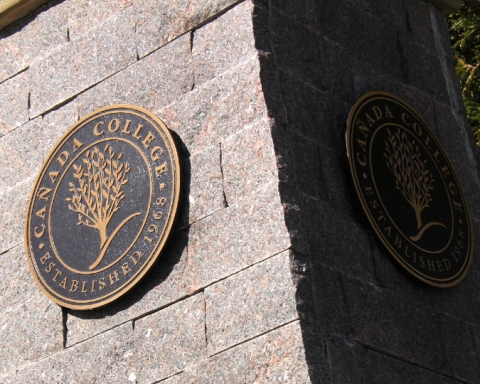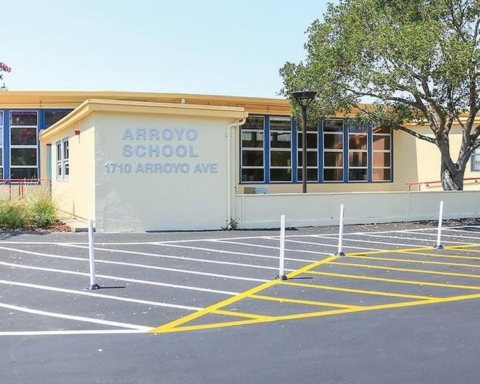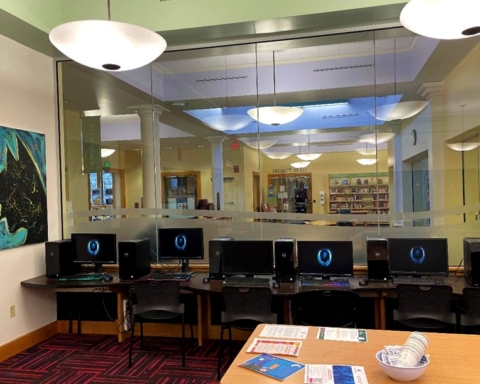By Bill Shilstone
A new round of layoffs and plans for converting Taft Community School on 10th Avenue to a model campus with a new name, new vision and new program have been added to Supt. John Baker’s proposals for reorganization of the Redwood City Elementary School District.
A public hearing on the proposals will be held Wednesday, Nov. 14 at 7 p.m. at the Fox Theatre in downtown Redwood City. The district’s five trustees will act on them Nov. 28 at Sequoia High School’s Carrington Hall.
Baker’s recommendations, detailed on the meeting agenda posted on the district web site, include the closing of Fair Oaks, Hawes and Orion, the closing of Taft for two years while it is remodeled, and the merging of the Adelante and Selby Lane bilingual programs at Selby Lane, with Adelante closing.
The closings save $3.6 million of the $4 million the district must cut next year to begin dealing with a $10 million budget shortfall caused by declining enrollment fueled by the drain of three charter schools and by families escaping the high cost of Peninsula living.
The layoffs will complete the $4 million cut for next year, Baker said in his written presentation to the board. He noted that the district has made $13 million in cuts since 2008 as enrollment has dived, down by 1,700 students since 2011 to its current level of about 7,600. Cuts included 120 teachers, resulting in larger class sizes, and 20 percent of district office staff, he said.
The recommendations all take into account the marked underpopulation of nearly all the district’s 16 schools. The numbers, compiled early in the fall, may have changed slightly, Baker said.
SCHOOL CAPACITY ENROLLMENT
Kennedy (6-8) 1,680 706
Hoover (K-8) 1,470 681
Selby Lane (K-8) 1,290 740
Clifford (K-8) 1,110 558
Roosevelt (K-8) 1,110 581
Taft (K-5) 1,080 331
Garfield (K-8) 1,020 570
Roy Cloud (K-8) 990 718
Fair Oaks (K-5) 960 221
Henry Ford (K-5) 780 377
McKinley IT (6-8) 720 408
John Gill (K-5) 660 288
North Star (3-8) 630 536
Hawes (K-5) 570 301
Adelante (K-5) 550 464
Orion (K-5) 270 211
Total 14,890 7,691
Here is how Baker’s proposals would affect each school:
Taft: Closes for two years, then reopens in 2021 with an “innovative, academically rigorous program serving a culturally and socioeconomically diverse population.” In the interim, students to go nearby Garfield or Hoover.
Orion: Moves to John Gill, sharing the site with the Mandarin/English immersion program.
John Gill: Current students have first priority to stay as part of the Orion parent participation choice option.
Adelante: School closes and its students move to Selby Lane to join 250 bilingual program students there.
Selby Lane: 460 students not in the bilingual program move to other schools.
Fair Oaks: School closes and students move to nearby Garfield or Hoover.
Hawes: School closes and students move to Roosevelt.
Roosevelt: Absorbs students from Hawes and John Gill.
Garfield and Hoover: Absorb Fair Oaks and Taft students.
Kennedy: Absorbs middle school students from Selby Lane.
Clifford, Roy Cloud, McKinley Institute of Technology, North Star Academy and Henry Ford: Not affected.
All current and incoming students at closing or merging schools will have priority in the district’s Schools of Choice program.
No determination has been made on what will happen to the closed-school properties.
The district office will close and move to a vacated school sometime in 2020, Baker said, saving $1.6 million a year. Other projects for the near future are a review of the K-8 vs. K-5/6-8 configuration and a study of the role of North Star Academy, the district’s accelerated-learning choice.
The proposals are designed in part to take advantage of the most popular choice programs, including Roosevelt’s project-based learning, by giving them room to expand and possibly attract more students. Baker said he is looking into the possibility of providing transportation to the schools of choice.






